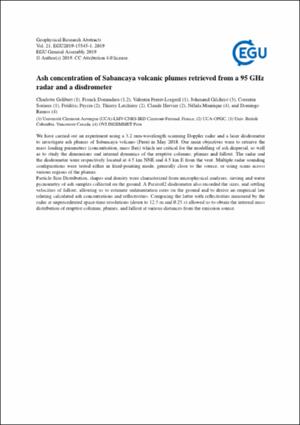Por favor, use este identificador para citar o enlazar este ítem:
https://hdl.handle.net/20.500.12544/2570Ficheros en este ítem:
| Fichero | Descripción | Tamaño | Formato | |
|---|---|---|---|---|
| Gelibert-Ash_concentration_Sabancaya_volcanic.pdf | Artículo de congreso | 37.86 kB | Adobe PDF | Visualizar/Abrir |
Este ítem está sujeto a una licencia Creative Commons Licencia Creative Commons












